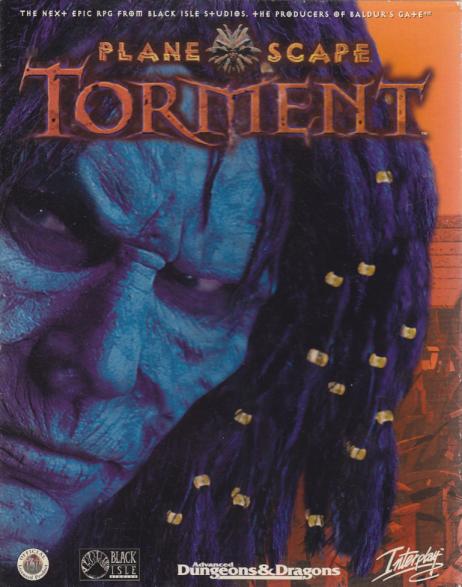Planescape: Torment Interview
-
Category: InterviewsHits: 13889

Article Index
Page 2 of 2
GB: A floating skull full of insults and taunts, a githzerai with a sword shaped through mental discipline, a tiefling rogue with a tail, a tanar'ri priestess, a mad wizard sentenced to eternal burning, a crossbow-wielding modron trying to figure out where he belongs in the world, and a possessed suit of armor whose sole purpose is to bring justice to the Planes. How did you come up with such a diverse group of NPCs and yet have them work so well together? Dan: I wish I could say I came up with the characters, but I'm just a programmer. I did, however, come up with the Midget Treasure Hunter and some other Broken Hills characters in Fallout 2.
GB: Was there any content you would have liked to see implemented into Torment that didn't make it into the game?
Dan: I seem to recall having grander plans for the Modron Maze. I wanted the randomized dungeon to be a little less predictable with regards to its layout. In the end, we just didn't have enough time. In retrospect, though, I think a cubic dungeon is actually pretty appropriate for the Modrons.
An ultra-ultra early idea for an ending that I thought would be cool (but admittedly completely stupid) was to have the whole game actually be the make-believe world of a child playing in his backyard with action figures. His mom would call him in for dinner, and he'd drop his Nameless One and Nordom figures into the sandbox and run off. Speaking of which, why couldn't we get freakin' action figures for this game? Space Channel 5 got action figures, damn it!
GB: Planescape: Torment continues to be an all-time favorite RPG for many people and is the only Infinity Engine title that has snatched a place on GameSpot's "Greatest Games of All Time" list. What do you attribute this lasting success to?
Dan: I think Torment was just very unique, and it can stand out even after time passes whereas traditional high-fantasy RPGs may blend together over time. It had an art style that nobody had seen before, or since for that matter. The writing was excellent and the characters actually mattered. It was a full-featured RPG that got more things right than it did wrong, and it was polished enough to leave a good impression on the people that make the Best Of lists. Good word of mouth doesn't hurt, either.
GB: Why do you think the Infinity Engine worked so well for Planescape: Torment (and four other highly successful RPGs), yet many developers are straying away from the party-based isometric style that was so critical to the engine's success?
Dan: I think it mostly has to do with the decrease in situational awareness necessary to play most modern games. Games that do require it, like RTSs and console strategy RPGs, will still often use isometric views just because it gives the player a good feel of the situation on the battlefield. In most major games these days, though, the player's character is the only one that really matters. Since there is no need to divide the player's attention amongst multiple controllable characters, it may be seen as wasteful to use an isometric view, whereas a first-person or over-the-shoulder view brings the player closer to the one important character they are controlling.
GB: If Obsidian Entertainment obtained the rights to develop another Planescape title, would you be receptive to creating another RPG using the setting? If so, where would you personally like to take the next game?
Dan: I'll make any game that seems like it could be fun to play. I don't have any particular preferences on direction, but I like me some Modrons, so I'd want to see more o' them.
Thanks for your time, Dan! More Modrons sounds good to us, too.


